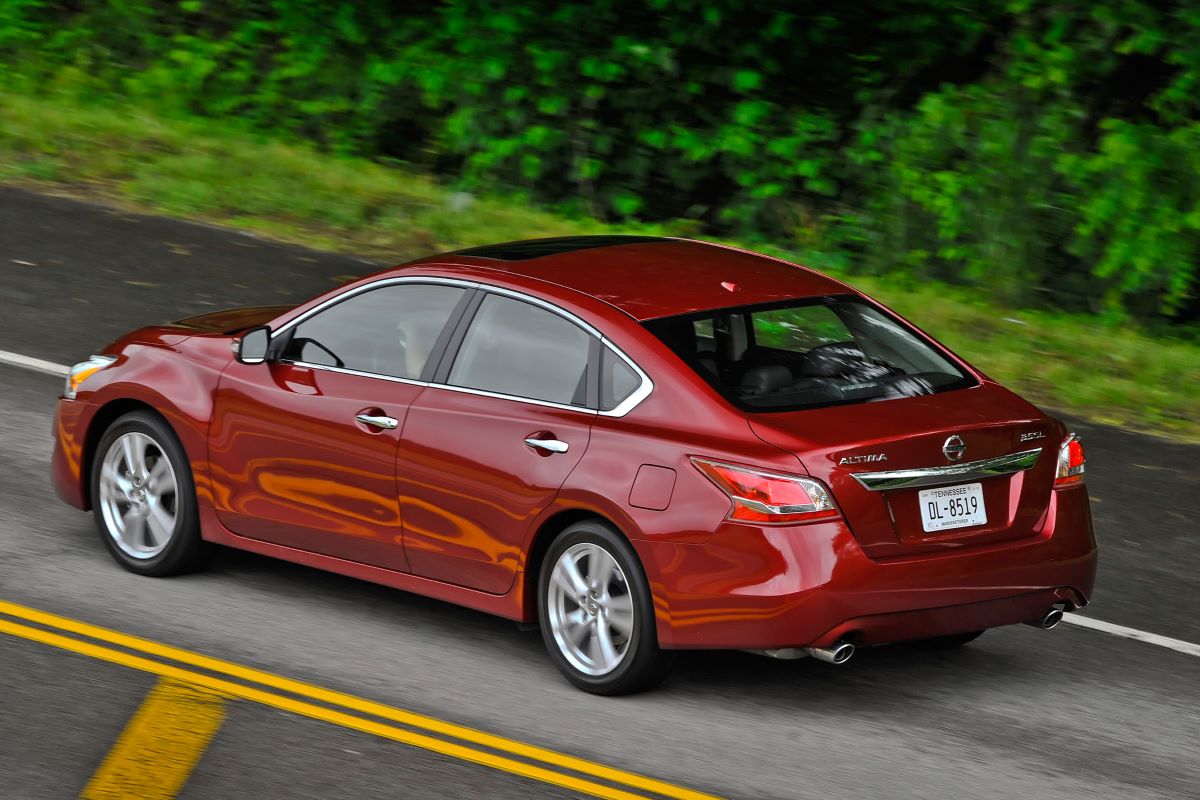The lifespan of a vehicle is a fascinating reflection of the intersection between engineering, design, maintenance, and everyday use. In the automotive world, some cars become legends for their ability to endure through countless miles and years, often surpassing milestones many deem impossible.
These vehicles, often affectionately called “million-mile cars,” serve as proof that with the right combination of robust construction, simplicity, and diligent upkeep, machines meant to move us can indeed last a lifetime and beyond.
They become more than just modes of transportation; they transform into reliable partners on life’s journey, carrying stories of roads traveled and memories made.
The phenomenon of cars lasting several hundred thousand miles, and in rare cases even exceeding a million, challenges the commonly held expectation that vehicles are disposable commodities, designed to be replaced every decade or so.
These exceptional vehicles often owe their durability to factors beyond just the brand or model name. Fundamentally, the engineering philosophy behind their design favors reliability and ease of repair over flashiness or cutting-edge complexity.
These cars usually boast straightforward mechanical systems that can be easily understood, serviced, and repaired even in remote locations or by owners with modest mechanical skills. Their engines, transmissions, and drivetrains are built with an emphasis on longevity and robustness, often sacrificing a bit of performance or refinement in favor of lasting power.
Additionally, many are constructed on body-on-frame platforms or utilize sturdy chassis designs that can better withstand years of wear and tear, accidents, and environmental challenges.
Beyond engineering, another critical component in achieving such high mileage is the dedication of the owners. Proper maintenance, regular inspections, timely repairs, and sometimes even mechanical upgrades help push these vehicles beyond what their original manufacturers might have envisioned.
On the flip side of this longevity spectrum lie vehicles that struggle to reach the 100,000-mile mark, often succumbing to mechanical failures, expensive repairs, or simply poor build quality. For these cars, passing the six-figure mileage barrier is less of a milestone and more of a hurdle, with many owners finding themselves facing major issues long before the odometer even hits that number.
This disparity between durable legends and fragile vehicles reveals much about the complex factors influencing automotive longevity. Some manufacturers may prioritize styling, technological features, or fuel efficiency at the expense of durability.
Others may cut corners on critical components or adopt complex systems that are difficult or costly to maintain. In many cases, a lack of consistent maintenance, harsh driving conditions, or sheer design flaws contribute to premature wear and failure.
Understanding why some cars can endure for hundreds of thousands or even millions of miles while others falter early is essential not only for car buyers but also for enthusiasts and industry watchers alike. It highlights the importance of robust design principles, owner responsibility, and realistic expectations about what a vehicle can deliver over its lifetime.
By studying both the champions of endurance and those prone to early struggles, we can better appreciate the art and science behind automotive reliability. This knowledge empowers consumers to make smarter choices, manufacturers to improve their products, and mechanics to offer more effective solutions.
In the following exploration, we will delve into examples of vehicles that have earned their places in the elite ranks of million-mile legends, celebrated for their toughness, mechanical simplicity, and faithful service. We will then examine models that commonly face challenges after crossing the 100,000-mile threshold, highlighting recurring issues and the reasons behind their relative fragility.
Through this comparative journey, a broader picture emerges—one that underscores how longevity is a blend of engineering, maintenance, use, and sometimes a little bit of luck.
Whether you are a prospective buyer aiming for a dependable daily driver, a collector searching for a durable classic, or simply an automotive enthusiast fascinated by what makes cars tick, this discussion offers valuable insights into the longevity divide in the automotive world.
Also Read: 5 SUVs With the Best Headlight Throw and 5 With Dark Spots
5 Cars With Million-Mile Histories

1: Toyota Land Cruiser
The Toyota Land Cruiser is more than just an SUV; it’s a symbol of rugged dependability and timeless engineering excellence. For decades, it has served as a go-anywhere, do-anything vehicle, winning the hearts of explorers, off-road enthusiasts, and hardworking professionals around the world.
From the deserts of Africa to the mountains of South America, Land Cruisers are renowned for their ability to tackle extreme terrain without faltering. The vehicle’s simple yet robust engineering philosophy is centered on durability, ease of repair, and the ability to withstand abuse that would cripple many other SUVs.
This commitment to durability has made it a favorite among those who demand a vehicle that won’t quit—ever. Unlike many modern vehicles that rely on complex electronics and fragile components, the Land Cruiser sticks to a tried-and-true formula: a strong chassis, a reliable engine, and a rugged suspension system designed to endure decades of heavy use. This has enabled many Land Cruisers to clock mileage that is practically unheard of in the automotive world.
At the heart of the Land Cruiser’s legendary longevity is its engine. The 4.7-liter V8 engine in the 100 and 200 series models is built with a focus on reliability rather than peak horsepower. It delivers steady power and torque while maintaining conservative operating temperatures, which greatly reduces wear and tear on engine components.
This engine is equipped with a cast-iron block and high-quality internals designed to last well beyond the 300,000-mile mark with routine maintenance. Even more impressive is the Land Cruiser’s transmission, which is engineered to handle the engine’s output without frequent rebuilds or replacements.
Toyota’s engineers intentionally overbuild these drivetrains, giving the Land Cruiser the ability to endure grueling conditions like off-road rock crawling, long-distance hauling, and high-speed highway driving with equal grace.
A crucial reason the Land Cruiser can go the distance is the vehicle’s straightforward mechanical layout and the global availability of parts. Unlike many modern cars that require specialized diagnostic tools and proprietary components, the Land Cruiser’s systems are relatively simple and accessible.
This means that owners can often perform maintenance and repairs themselves, or rely on mechanics anywhere in the world who are familiar with the vehicle.
Toyota’s extensive global supply chain ensures that replacement parts, from filters to transmissions, are widely available even in remote locations. This is an invaluable factor for owners in developing regions or those who use their Land Cruisers as expedition vehicles, where downtime can be costly or dangerous.
Finally, the Land Cruiser’s longevity is as much about its owners as it is about the vehicle itself. Many Land Cruiser enthusiasts treat their vehicles as lifelong companions, performing regular preventive maintenance such as oil changes, fluid flushes, and suspension upkeep.
These owners often customize their vehicles for durability, adding aftermarket upgrades like heavy-duty skid plates, reinforced suspension components, and improved cooling systems.
Because of this deep relationship between vehicle and owner, the Land Cruiser’s reputation for million-mile reliability continues to grow, with numerous documented cases of vehicles surpassing one million miles while remaining daily drivers or expedition vehicles.
The Toyota Land Cruiser’s blend of simplicity, strength, and owner dedication firmly establishes it as one of the greatest automotive legends ever built.
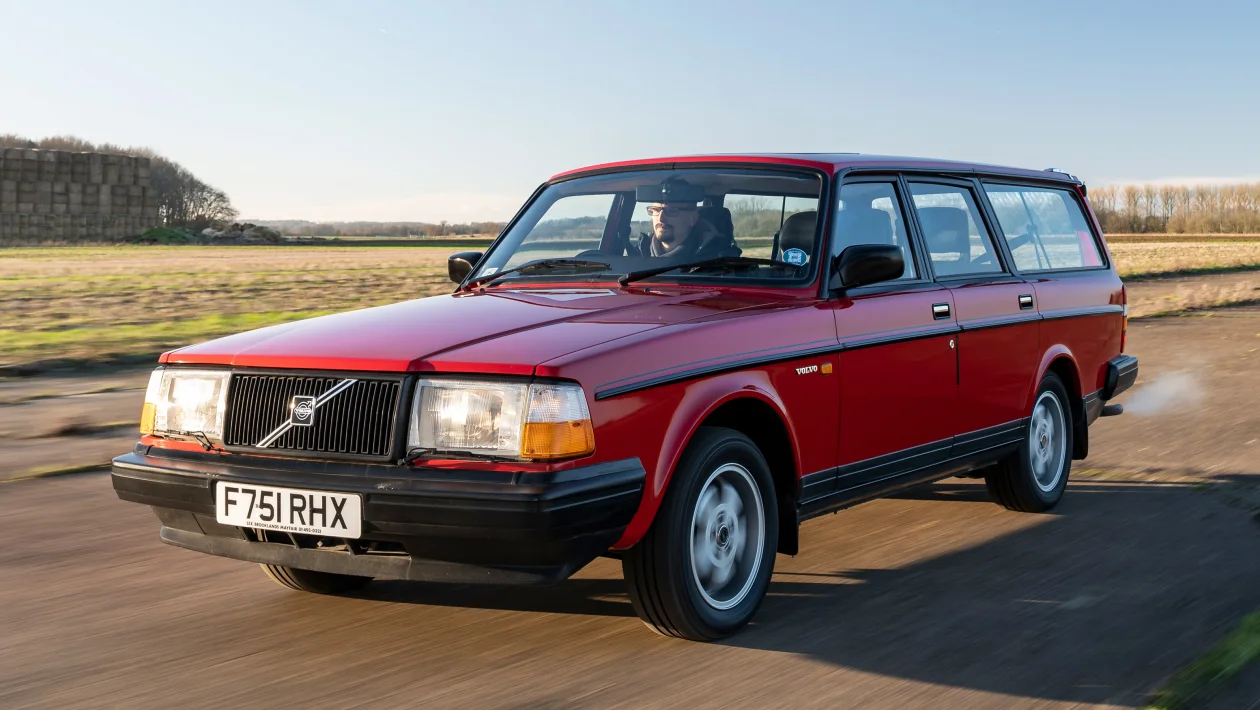
2: Volvo 240
The Volvo 240 stands as a shining example of how engineering focused on safety, reliability, and longevity can create a car that defies time. Introduced in the early 1970s and produced for over a decade, this boxy sedan and wagon combination quickly became known for its bulletproof construction and virtually unbreakable drivetrains.
The design philosophy behind the 240 was to build a car that not only protected its passengers but also served its owners faithfully for decades.
Its unpretentious style and mechanical simplicity have allowed the 240 to endure as a beloved classic car, with many examples still on the road after crossing the half-million and even million-mile thresholds. This kind of longevity is rare and speaks volumes about the robustness of the Volvo 240’s engineering.
At the core of the Volvo 240’s longevity is its dependable 2.3-liter inline-four engine, known for its cast-iron block and iron head. Unlike many modern engines built with lightweight aluminum blocks prone to wear and warping, the 240’s engine is built with heavy-duty materials that can take years of abuse.
Its simple fuel injection system avoids unnecessary complications, making it easier for mechanics and owners to maintain or rebuild the engine. Many Volvo 240 engines have been known to run smoothly for hundreds of thousands of miles without any major overhauls, as long as owners perform routine oil changes, cooling system maintenance, and timing belt replacements.
The engine’s durability is enhanced by Volvo’s conservative tuning approach, which avoids pushing the engine to its limits and thereby prolongs its life. In addition to the engine, the chassis and body of the Volvo 240 contribute significantly to its legendary lifespan.
The vehicle’s boxy design isn’t just for looks—it’s a structural choice that allows for a reinforced frame, making the car incredibly rigid and safe. The 240 was designed in an era before extensive use of plastic body panels, so its heavy steel construction resists rust and damage that often plague vehicles of similar age.
The suspension and steering systems are simple but robust, composed of large, replaceable components that can be swapped out without expensive or complicated procedures. The interior, while utilitarian, is constructed with materials that age gracefully and do not break down easily, preserving the vehicle’s usability and comfort for decades.
What truly sets the Volvo 240 apart, however, is its dedicated community of owners who cherish the car as an heirloom or workhorse. Many 240 owners have turned their vehicles into projects, replacing worn parts and upgrading where necessary to keep their Volvos running smoothly.
The car’s straightforward mechanical design means it can be serviced in a home garage with basic tools, and replacement parts are still widely available thanks to a robust aftermarket.
The Volvo 240’s longevity is a combination of solid mechanical design, simple yet effective engineering, and passionate owners who prioritize maintenance and restoration. This synergy is why these cars have become icons of endurance, with some examples crossing the million-mile mark and still cruising comfortably.
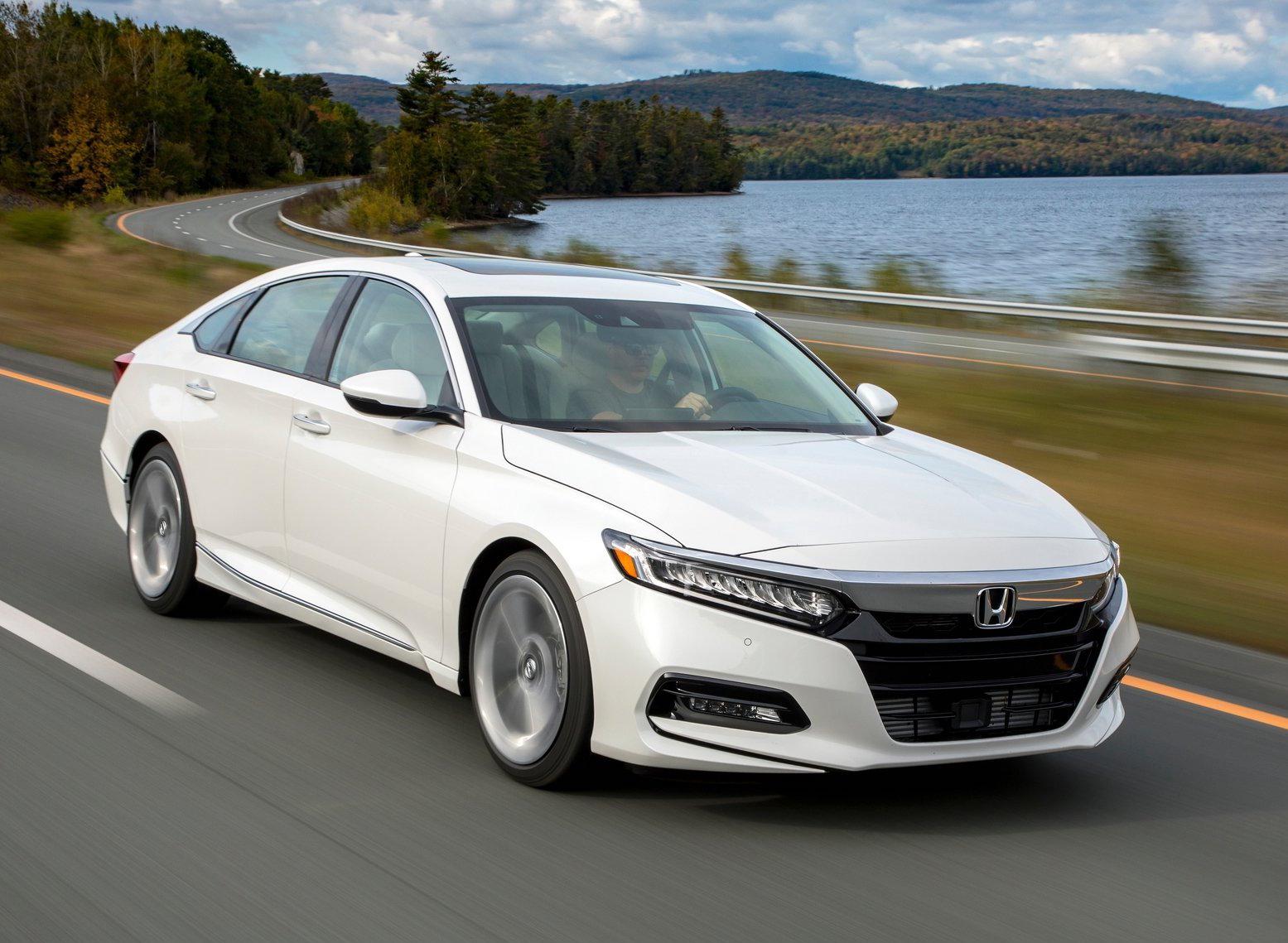
3: Honda Accord
The Honda Accord’s reputation as one of the most reliable and long-lasting family sedans in history is well-earned. Since its debut in the 1970s, the Accord has consistently balanced efficiency, comfort, and reliability in a package that appeals to millions of drivers worldwide.
What makes the Accord particularly special is its ability to maintain near-new performance and drivability even after hundreds of thousands of miles.
The car has repeatedly proven itself in the hands of daily commuters, families, and enthusiasts alike who rely on it for everything from short city trips to cross-country road trips. It’s a car designed with longevity in mind, and many owners report their Accords surpassing the 300,000 to 500,000-mile range without major issues, with some reaching the coveted million-mile mark.
Central to the Accord’s longevity is Honda’s legendary engine design. The company’s inline-four engines, especially the 2.4-liter DOHC engines from the mid-2000s models, are engineered with high-quality materials and precision manufacturing that significantly reduce internal friction and wear.
Many newer Accords employ timing chains instead of belts, which drastically cuts down on maintenance and reduces the chances of catastrophic engine failure. Honda engines are known for their ability to rev smoothly and consistently without developing common problems such as oil burning or head gasket failures, which plague other manufacturers.
When properly maintained, the Accord’s engine is capable of running well beyond half a million miles, making it one of the most trusted powertrains in the used car market.
In addition to a durable engine, the Accord’s chassis and suspension setup contribute to its overall longevity. The vehicle strikes an excellent balance between ride comfort and handling stability, which prevents excessive stress on suspension components.
The front-wheel-drive platform reduces complexity and wear associated with all-wheel or rear-wheel drive systems, and the lightweight design helps minimize strain on brakes and tires.
Moreover, Honda’s attention to corrosion resistance ensures that the body and frame remain structurally sound even after many years on the road. This combination of factors means that the Accord remains a comfortable and safe vehicle long after many competitors have succumbed to rust, wear, or mechanical failure.
Finally, the Accord’s affordability and availability of parts make it easy and economical to keep these cars running. A thriving aftermarket provides inexpensive, quality components for routine maintenance and repair, allowing owners to address issues promptly without breaking the bank.
The Accord’s simple mechanical layout, coupled with an abundance of knowledgeable mechanics, means that even complex repairs tend to be straightforward and accessible.
The car’s proven track record has cultivated a strong resale value and loyal fan base, making it an attractive option for drivers seeking a durable, long-term vehicle. When combined with disciplined maintenance habits, the Honda Accord stands as a true champion of the million-mile club.
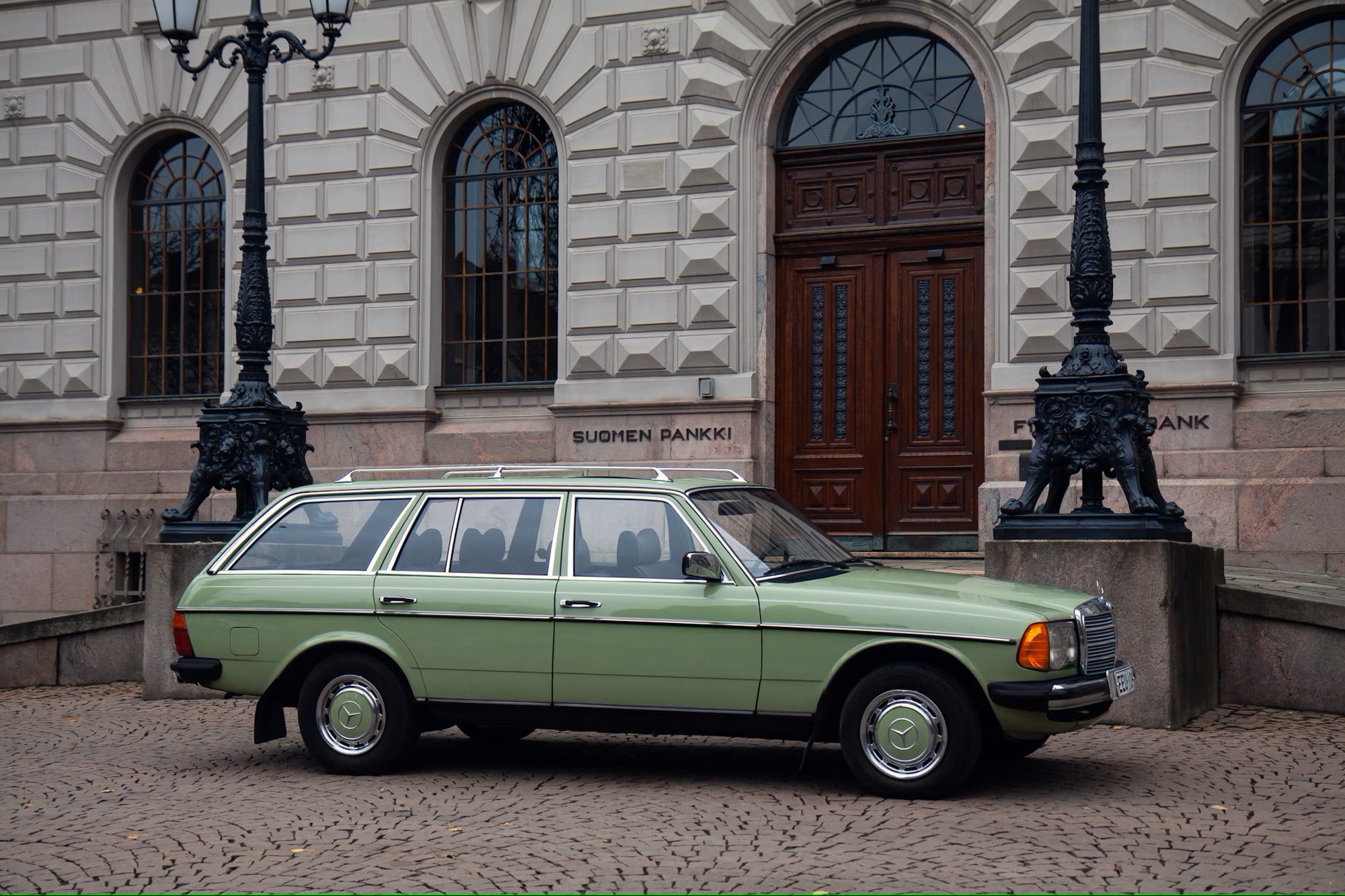
4: Mercedes-Benz W123
The Mercedes-Benz W123 series, produced from 1976 to 1985, represents a golden era in automotive engineering when luxury met unparalleled durability. These vehicles are revered not only for their comfort and build quality but also for their astonishing longevity.
The W123’s robust design philosophy and high manufacturing standards resulted in cars that could endure decades of daily use with minimal issues. It’s no surprise that W123 models, particularly the diesel variants, have become synonymous with the idea of the “million-mile car.”
The blend of sophisticated German engineering and straightforward mechanical components has ensured that many of these cars remain on the road today, decades after their initial production.
The crown jewel of the W123’s longevity is undoubtedly its diesel engine options. The 3.0-liter inline-five diesel engine, in particular, is famous for its resilience and low maintenance requirements.
Built with a heavy cast-iron block and head, this engine is designed to run at moderate speeds and avoid unnecessary stress, resulting in a powerplant that can run for hundreds of thousands of miles with little more than routine oil changes and fuel system care.
Diesel engines inherently tend to have longer service lives due to their robust construction and operating characteristics, and the W123’s diesel variants exemplify this perfectly. Owners often report that these engines can exceed the million-mile mark with proper care, rarely needing major repairs beyond standard tune-ups.
Aside from the engine, the W123’s chassis and body design play a vital role in its longevity. The car features a heavy-duty steel frame and thick body panels that resist rust and corrosion, which are common downfall points for vehicles of this age.
The suspension system, though sophisticated for its time, remains accessible for repairs and upgrades, allowing owners to keep their W123s comfortable and safe despite high mileage.
Inside, the W123 was built with durable materials, from the solid wood trim to the high-quality upholstery, many of which withstand decades of wear without deteriorating. The engineering emphasis on quality craftsmanship makes this Mercedes-Benz a vehicle that owners are proud to restore and maintain.
Finally, the Mercedes-Benz W123 enjoys a dedicated following of enthusiasts and classic car collectors who help keep these vehicles on the road. The availability of parts, combined with a well-documented maintenance history, allows owners to perform restorations and preventative maintenance efficiently.
Many W123s have served as taxis in Europe for decades, which is a testament to their durability and the trust placed in them by professional drivers.
The reputation of the W123 as a luxury car that can also function as a reliable workhorse has cemented its status in the million-mile club, proving that quality engineering and build standards from an earlier era can still compete with modern vehicles.
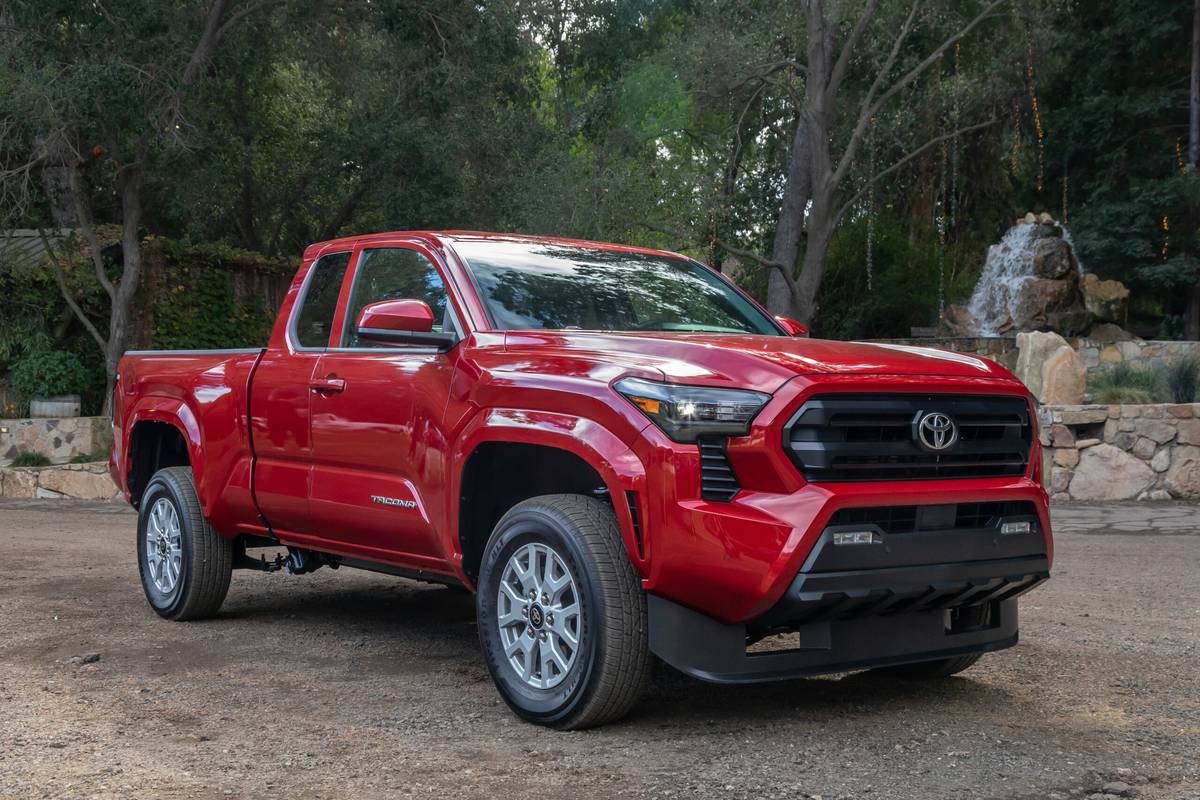
5: Toyota Tacoma
The Toyota Tacoma is widely celebrated as one of the most durable midsize pickup trucks ever produced, with a reputation that extends well beyond North America.
Since its introduction in the mid-1990s, the Tacoma has been prized for its rugged construction, straightforward mechanics, and impressive reliability under a variety of conditions—from urban commuting to heavy-duty off-road use.
Unlike many other pickups that struggle with premature rust or mechanical issues, the Tacoma offers a near-perfect balance of toughness and longevity, making it a favorite among contractors, outdoor enthusiasts, and anyone who needs a dependable workhorse that won’t quit halfway through the job.
The Tacoma’s reputation for surviving rough treatment and accumulating massive mileage is well-earned, with many examples still running strong well past the 300,000 to 500,000-mile mark, and some even achieving the elusive million-mile milestone.
One of the key reasons the Tacoma lasts so long is its engineering emphasis on simplicity and robustness. Toyota’s engineers designed the Tacoma’s engines, transmissions, and drivetrain components to handle tough conditions while requiring minimal fuss.
The 3.4-liter V6 engine found in second-generation Tacomas, for example, is renowned for its strong low-end torque, reliability, and forgiving nature when it comes to maintenance intervals. These engines are built with durable materials and designed to avoid the complexity that often leads to early mechanical failure.
The transmissions paired with these engines—whether manual or automatic—are similarly reliable, constructed to withstand heavy loads and off-road stresses without frequent breakdowns. This combination ensures that the Tacoma can serve faithfully for hundreds of thousands of miles without major repairs.
Beyond the engine and drivetrain, the Tacoma’s chassis and body design contribute significantly to its longevity. The truck is built on a sturdy frame that resists bending and corrosion better than many of its competitors. Its suspension system, including heavy-duty leaf springs in the rear, is designed to carry loads without compromising ride quality or handling stability.
This durability is further enhanced by Toyota’s rigorous quality control standards and conservative design approach, which prioritizes proven components over untested innovations.
Tacoma owners often praise the vehicle for its ability to endure harsh environments, including salty winter roads that would rapidly corrode lesser trucks. The result is a vehicle that maintains structural integrity and mechanical soundness long after many similar trucks have been retired.
Another major factor in the Tacoma’s million-mile status is the widespread availability of parts and aftermarket support. Toyota’s extensive dealer network and a vibrant aftermarket community ensure that replacement parts, upgrades, and repairs are easy to access and affordable.
This accessibility encourages owners to keep their Tacomas in top shape, performing preventative maintenance such as brake servicing, fluid changes, and suspension repairs well before issues become critical. Furthermore, the Tacoma’s simple, mechanical systems mean that many repairs can be done by owners or independent mechanics without expensive dealership visits.
This combination of durability, repairability, and supportive ownership culture has helped cement the Tacoma’s legacy as one of the few trucks capable of reliably crossing the million-mile mark and continuing to serve faithfully well beyond that.
5 That Struggle Past 100,000
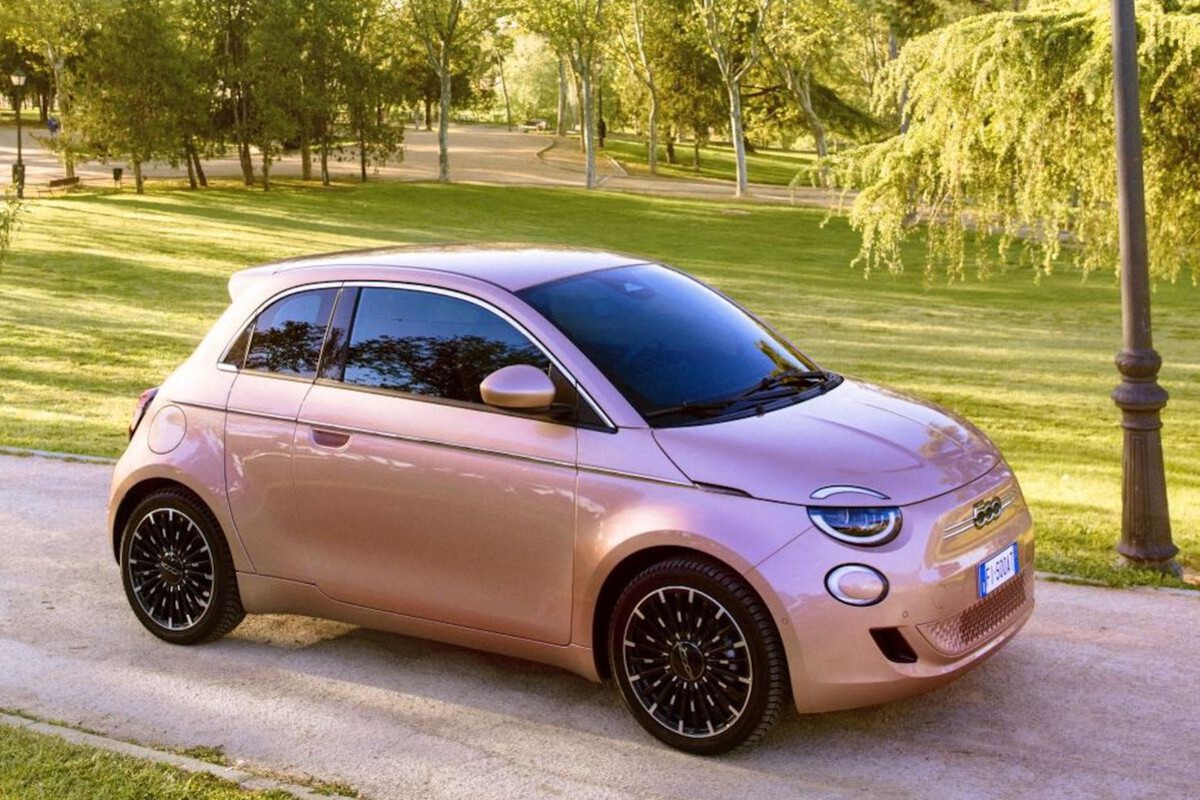
1: Fiat 500 (Modern Generation)
The modern Fiat 500, launched as a retro-inspired city car in the late 2000s, offers plenty of charm and style but has gained a reputation for struggling to reach the 100,000-mile milestone. While the car’s compact size and nimble handling make it an attractive option for urban commuters, the Fiat 500’s build quality and mechanical robustness often leave much to be desired.
Early models were frequently criticized for a number of reliability issues, ranging from electrical gremlins to engine troubles and transmission failures. The engine, while peppy and efficient for city driving, is relatively small and operates under tight tolerances, making it vulnerable to wear if maintenance schedules aren’t followed religiously.
Additionally, some components were designed more with cost-cutting in mind rather than durability, which has contributed to a higher incidence of problems as the mileage climbs.
Mechanically, the Fiat 500 uses a small turbocharged 1.4-liter inline-four engine in many trims, which is susceptible to issues such as turbo failure, carbon buildup, and oil leaks if not properly maintained.
The combination of a small engine working hard to propel the car—especially in stop-and-go traffic—can lead to accelerated wear on the engine and associated components like the turbocharger and fuel injection system.
Moreover, the transmission, particularly the automated manual variant, has been the subject of numerous complaints related to rough shifting, premature clutch wear, and occasional failure, which can be expensive to repair. These mechanical weaknesses make it challenging for the Fiat 500 to consistently exceed 100,000 miles without requiring costly interventions or extensive rebuilds.
Aside from mechanical concerns, the Fiat 500 also faces durability issues related to its electrical system. Owners frequently report problems with the car’s infotainment system, power windows, and other electronically controlled accessories.
Given that many of these components are integrated and often proprietary, diagnosing and repairing these faults can be complicated and costly, leading some owners to abandon their vehicles well before hitting the 100,000-mile threshold.
The cramped engine bay and tight packaging further complicate repairs, sometimes requiring labor-intensive disassembly to address relatively minor issues. These factors combine to make the Fiat 500 a less than ideal candidate for long-term ownership or high-mileage driving.
Finally, the Fiat 500’s overall build quality and materials selection contribute to its challenges in longevity. The interior, while stylish and unique, often features cheaper plastics and trim pieces prone to rattling, fading, or breaking over time.
The suspension components, designed more for comfort and economy rather than ruggedness, wear out faster under real-world driving conditions.
Rust has also been reported on certain models, particularly those driven in regions with harsh winters and road salt. Collectively, these factors contribute to a car that, while fun and fashionable, tends to struggle with the demands of long-term durability and can be difficult to keep running well beyond 100,000 miles without significant maintenance and repair costs.
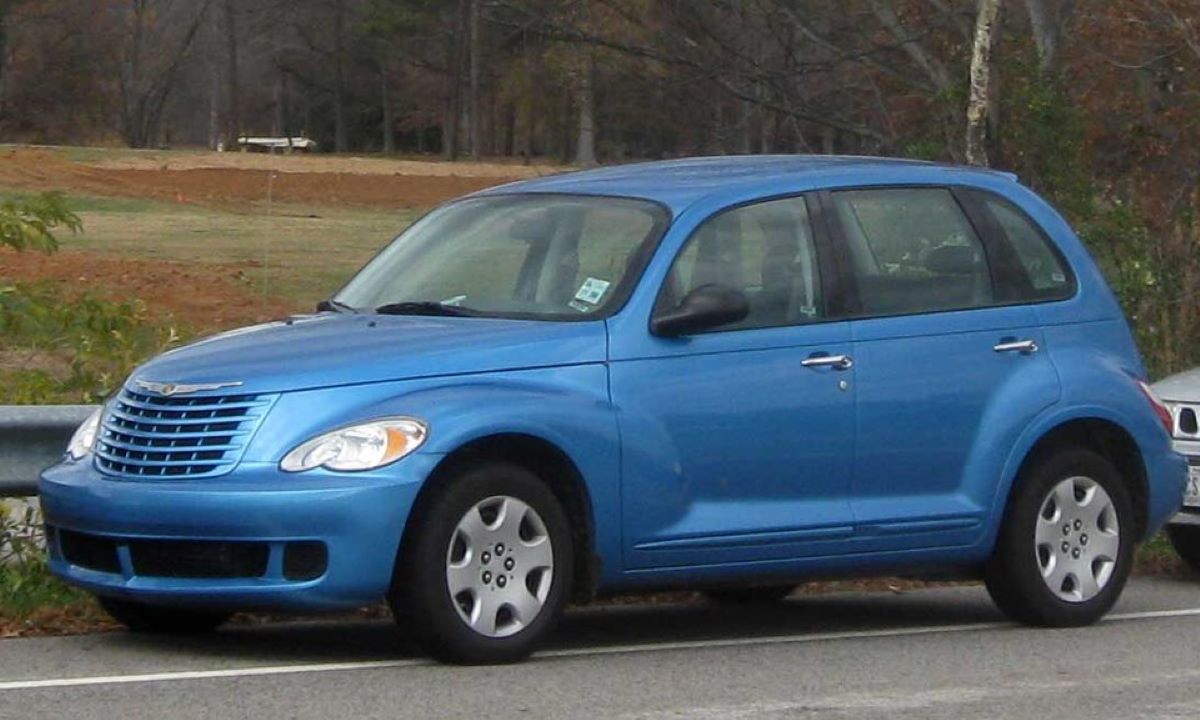
2: Chrysler PT Cruiser
The Chrysler PT Cruiser is an iconic and polarizing vehicle, admired for its unique retro styling but often criticized for its lackluster performance and questionable reliability. Despite its initial popularity and nostalgic design appeal, the PT Cruiser is infamous for its difficulties in surpassing the 100,000-mile barrier.
While it was marketed as a practical and affordable family vehicle, the car’s underlying mechanical architecture suffered from aging and sometimes problematic components that have led to a reputation for frequent repairs and premature wear. From the engines to the transmission and suspension, many PT Cruisers begin to reveal their weaknesses well before hitting six figures on the odometer.
One of the primary issues with the PT Cruiser is its turbocharged 2.4-liter inline-four engine, found in many models, which, while providing spirited performance, tends to require extensive maintenance to remain reliable. The engine’s turbocharger, intercooler, and associated components are known for premature failure, especially when neglected or driven hard.
Moreover, the PT Cruiser’s cooling system has been a weak point, with reports of overheating leading to head gasket failures and warped cylinder heads.
These problems often result in costly engine repairs or replacements that can dissuade owners from continuing with the vehicle long-term. The non-turbocharged versions, while simpler, still suffer from issues like timing chain tensioner failures and oil leaks, further complicating the engine’s reliability profile.
The PT Cruiser’s transmission is another frequent source of headaches for owners. Early automatic transmissions were notorious for slipping, harsh shifting, and premature failure, sometimes requiring complete replacements well before the vehicle reached 100,000 miles.
Manual transmission versions fare slightly better but still present clutch wear issues that are expensive to repair. Suspension components also tend to wear quickly, with bushings, ball joints, and struts requiring frequent replacement to maintain proper ride quality and handling.
The car’s compact and somewhat cramped interior and engine bay complicate repairs, often leading to higher labor costs and longer downtime. These mechanical vulnerabilities combine to make the PT Cruiser a challenging vehicle for those seeking longevity and hassle-free ownership.
Beyond mechanical concerns, the PT Cruiser’s build quality and materials also contribute to its difficulties surpassing 100,000 miles. Many owners report problems with interior trim pieces, door handles, and electronic accessories, including power windows and locks, which often fail or require repairs.
The vehicle’s body panels are also prone to rust, particularly in regions with heavy road salt use, and the paint quality has been criticized for fading or chipping over time. Together, these issues create an ownership experience that can feel more like a series of ongoing repairs rather than reliable transportation.
While the PT Cruiser offers distinctive styling and a comfortable ride, these advantages are frequently overshadowed by the car’s tendency to struggle with durability and reliability past the 100,000-mile mark.
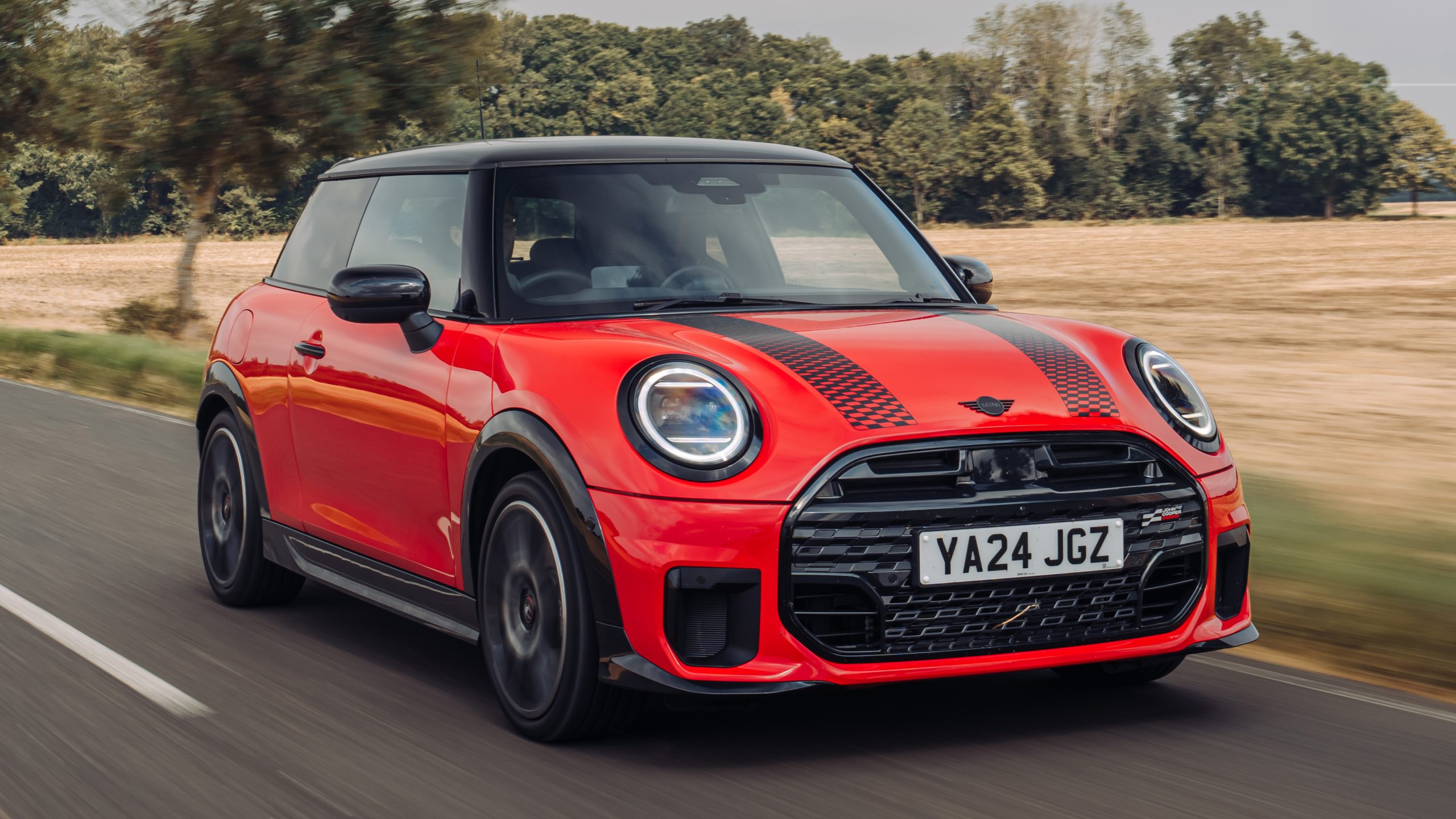
3: Mini Cooper (Early Models)
The early generation Mini Cooper, launched under BMW’s stewardship, brought the beloved British icon into the modern era with sleek styling and peppy performance. However, this modernization came with a price: these early Minis have gained a reputation for struggling to remain reliable and durable as mileage climbs beyond the 100,000 mark.
While fun to drive and compact enough for city living, many early Minis are plagued by mechanical and electrical problems that reduce their lifespan significantly compared to other vehicles in their class. Enthusiasts love them for their handling and heritage, but owners frequently find themselves facing expensive repairs as the cars age, making them challenging long-term investments.
The engine choices in early Minis—usually 1.6-liter inline-four gasoline engines—are generally spirited and responsive but come with known issues that limit their longevity. Problems such as head gasket failures, valve cover gasket leaks, and coolant system weaknesses are common, often necessitating major engine work well before 100,000 miles.
Additionally, these engines can suffer from carbon buildup and oil sludge if oil changes and maintenance are not strictly adhered to, leading to reduced performance and reliability.
Turbocharged variants have even more complex systems that increase the likelihood of expensive turbo and engine component failures. The engines, while exciting to drive, are not built with an emphasis on long-term durability, contributing to their reputation for early mechanical troubles.
Transmission reliability is another hurdle for early Mini Coopers. The automatic transmissions in these models are known for being finicky and prone to failure, often requiring costly rebuilds or replacements. Manual transmissions, while generally more reliable, still face issues with clutch wear and differential problems that arise prematurely.
Additionally, the suspension and steering components, designed for sporty handling, use compact, precision parts that wear out faster than the heavy-duty parts found in larger vehicles.
Suspension bushings, ball joints, and tie rods often need replacement at intervals shorter than the 100,000-mile mark. These factors combine to increase maintenance costs and make long-term ownership more challenging than many other cars with comparable mileage.
Electrical system issues also plague early Mini Coopers, with frequent complaints of malfunctioning dashboard electronics, window regulators, and sensors.
The complexity of the electronics combined with limited access to some components leads to expensive and time-consuming repairs. Moreover, the compact interior packaging means that diagnosing and fixing these issues is often labor-intensive, further driving up maintenance costs.
Rust is less of a widespread problem compared to other cars but still appears in some examples, especially those exposed to harsh climates. These mechanical and electrical frailties make it difficult for many early Mini Coopers to comfortably exceed 100,000 miles without significant investment, often steering owners towards newer models or other brands for greater reliability.
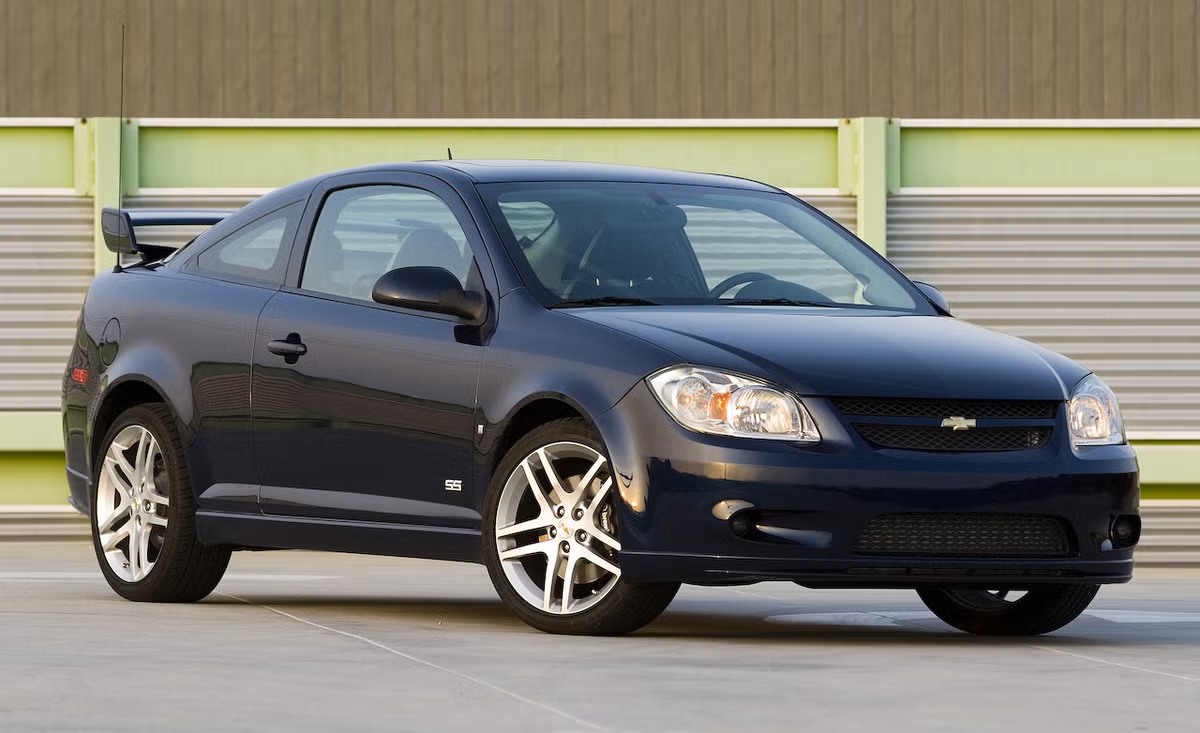
4: Chevrolet Cobalt
The Chevrolet Cobalt, produced from 2004 to 2010, was GM’s answer to the growing demand for affordable compact cars in the U.S. market. While initially praised for its styling and budget-friendly price, the Cobalt’s reputation for reliability quickly diminished as more owners encountered mechanical and electrical problems that hinder its ability to last beyond 100,000 miles.
Despite GM’s intentions to provide an accessible daily driver, the Cobalt often falls short of durability expectations, with many units experiencing premature engine failures, transmission issues, and other mechanical setbacks that challenge long-term ownership. The car’s reputation for being unreliable in the long haul has kept many buyers wary of considering it as a high-mileage candidate.
The Cobalt’s engine, typically a 2.2-liter inline-four, is generally simple but prone to certain failure points that manifest well before reaching the 100,000-mile mark. Issues such as timing chain tensioner failures, excessive oil consumption, and head gasket problems have been widely reported, often leading to costly repairs or complete engine rebuilds.
The variable quality of manufacturing and materials used during production also contributed to inconsistent reliability across different model years and trims.
Some turbocharged variants introduced later added performance but also complexity that negatively affected longevity. The engine’s relatively small displacement combined with the vehicle’s weight sometimes leads to overworking the powertrain, exacerbating wear and reducing lifespan.
Transmission troubles are another serious concern with the Chevrolet Cobalt. Both the automatic and manual transmissions have been known to suffer from premature wear, with symptoms like slipping, harsh shifting, and occasional failure requiring expensive repairs or replacements.
Transmission fluid leaks and torque converter problems are not uncommon and can lead to costly breakdowns. Suspension components and steering systems, while adequate for the vehicle’s size, are not engineered for longevity, often requiring replacements due to worn bushings, shocks, and ball joints in fewer than 100,000 miles.
These mechanical issues collectively contribute to the Cobalt’s poor long-term durability, limiting its ability to consistently serve as a reliable daily driver past the 100,000-mile mark. Electrical system issues also detract from the Cobalt’s overall reliability.
Owners have reported problems with the vehicle’s ignition systems, dashboard instruments, and power accessories such as windows and door locks. These electronic faults can cause drivability problems or annoyances that diminish the vehicle’s usability.
The Cobalt’s interior materials and build quality have also been criticized, with frequent complaints of premature wear of seat fabrics, rattling trim, and fading plastics.
This combination of mechanical, electrical, and cosmetic challenges results in a vehicle that, while affordable initially, may become costly and unreliable as mileage increases, discouraging owners from attempting to keep their Cobalts beyond 100,000 miles.
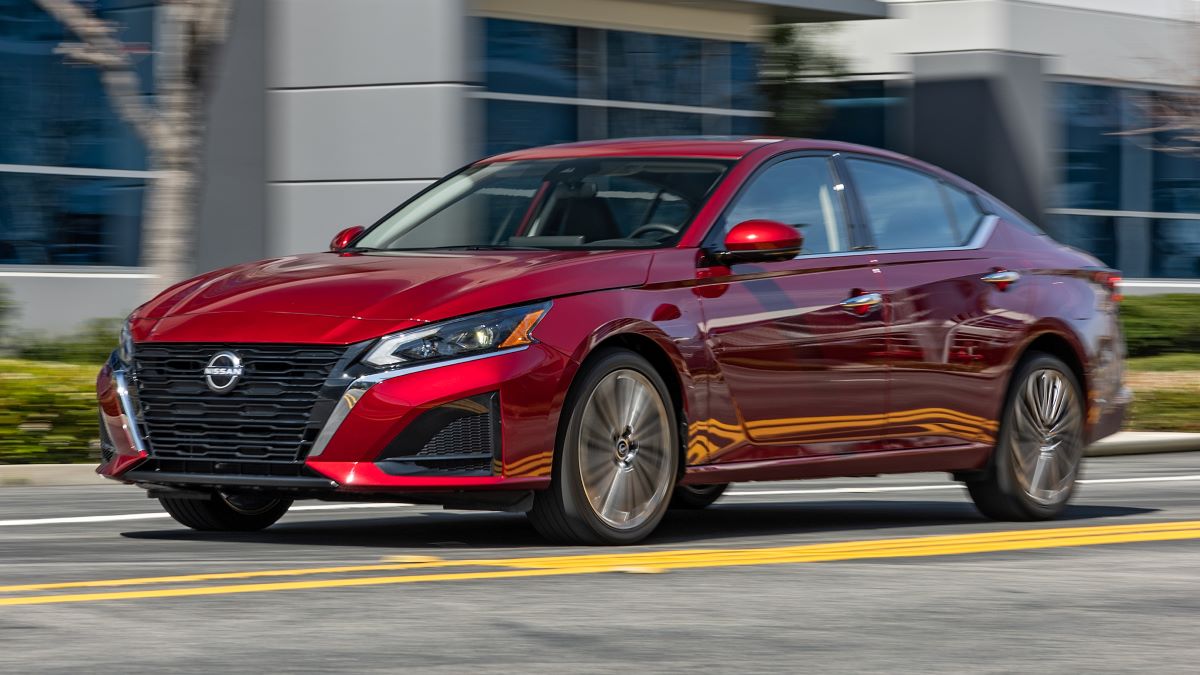
5: Nissan Altima (Early 2000s)
The early 2000s Nissan Altima was a popular midsize sedan, offering affordable pricing, decent fuel economy, and a comfortable ride. However, the models from this era developed a reputation for a variety of mechanical issues that hinder their ability to reliably cross the 100,000-mile milestone.
While the Altima was a common choice for families and commuters, the vehicle’s powertrain and build quality often left owners dealing with costly repairs and unexpected failures much earlier than expected. These problems have led to the Altima becoming an example of a car that struggles with durability despite its initial appeal.
The Altima’s most notorious issue is related to its engine, particularly the 2.5-liter inline-four used in many models. This engine is prone to excessive oil consumption, which can cause premature engine wear or failure if not closely monitored.
Additionally, problems with the timing chain tensioner, camshaft wear, and valve issues have been documented, often requiring expensive engine work to maintain performance and reliability.
Some models also suffered from head gasket failures and coolant leaks, further complicating maintenance. The combination of these engine issues has led many owners to seek engine rebuilds or replacements well before the 100,000-mile mark, reducing confidence in the Altima’s long-term durability.
Transmission reliability is another weak point for early Nissan Altimas. The continuously variable transmission (CVT) used in some trims was particularly prone to failure, with many owners reporting premature wear, slipping, and even complete breakdowns.
Repairs to CVTs can be costly and often lead to owners opting for engine swaps or vehicle replacements instead. Even models equipped with conventional automatic transmissions have experienced issues with shifting and fluid leaks, contributing to higher maintenance expenses.
Suspension and braking systems also show signs of early wear, with common problems including worn struts, failing brake calipers, and squeaky components that require frequent servicing to maintain safe operation.
Lastly, the Altima’s interior and build quality have not aged well, with reports of premature wear on upholstery, dashboard cracking, and malfunctioning power accessories. Electrical gremlins are not uncommon, affecting everything from power windows to dashboard gauges.
These issues, combined with the mechanical faults, have led to the Altima developing a reputation for needing significant repairs to keep running reliably past 100,000 miles.
While many owners have managed to extend their vehicle’s life through diligent maintenance, the overall durability of early 2000s Altimas remains questionable, positioning it as a car that struggles more than most to join the ranks of long-lasting vehicles.
Also Read: Top 10 EV Features That Come in Useful in Daily Commute
Longevity in the automotive world is more than just a measure of miles traveled; it represents a confluence of thoughtful engineering, responsible ownership, and often, a bit of serendipity. The vehicles that achieve extraordinary mileage records challenge the notion of disposability that frequently surrounds modern cars.
These mechanical marvels, having survived the relentless passage of time and wear, stand as testament to the possibility of designing and maintaining machines built to endure. They offer more than just reliable transportation—they offer peace of mind, a sense of loyalty, and sometimes even emotional attachment born from years of shared experiences.
Their ability to cross seemingly insurmountable mileage milestones speaks to a philosophy of simplicity, durability, and ease of repair, qualities that have often been overshadowed by the allure of high-tech gadgetry and fleeting trends.
Conversely, the vehicles that struggle to move beyond the 100,000-mile barrier reveal the vulnerabilities in automotive design and manufacturing. Whether due to intricate mechanical systems prone to failure, cost-cutting in critical components, or a lack of rigorous durability testing, these cars often require significant intervention to remain operational.
The frustrations experienced by owners of such vehicles—frequent breakdowns, expensive repairs, and diminished reliability—underscore the importance of sound engineering and quality assurance.
These challenges also highlight the crucial role that routine maintenance and proper care play; even the best-designed car can falter without attention, while a poorly designed one might never be truly reliable regardless of upkeep.
What emerges from this contrast is a deeper understanding of the factors that govern vehicle longevity. Design philosophies centered on mechanical simplicity, robust materials, and practical engineering tend to produce cars capable of going the distance.
Manufacturers who invest in parts availability, straightforward repair processes, and continuous quality improvements create a foundation upon which long-term durability can flourish. Equally important is the role of the owner, whose commitment to routine maintenance, timely repairs, and cautious driving habits can prolong a vehicle’s life far beyond expectations.
The synergy of these factors turns ordinary vehicles into legends and lifts owners into a unique club of those who have experienced the rare pleasure of a car that truly stands the test of time.
This knowledge carries significant implications for buyers in the marketplace today. With increasing complexity in modern cars—ranging from advanced electronics to hybrid powertrains—the challenge of longevity grows.
Understanding the trade-offs involved in choosing a vehicle that balances innovation with proven reliability can save consumers considerable time, money, and frustration. It encourages a mindset that values durability and serviceability alongside aesthetics and performance.
Furthermore, it reminds manufacturers of the enduring value of building vehicles that do more than just captivate for a few years—they build vehicles that can be trusted companions for decades.
In the end, the story of automotive longevity is a reminder that vehicles are more than metal and rubber; they are investments, tools, and often extensions of ourselves.
The cars that surpass milestones once thought unreachable offer hope that with the right design and care, machines meant for travel can become lifelong partners. Meanwhile, the models that falter early serve as cautionary tales, encouraging ongoing improvements and better consumer awareness.
As technology evolves and consumer expectations shift, the lessons from both ends of the spectrum remain vital. They guide us toward smarter choices, inspire engineering excellence, and celebrate the enduring bond between humans and their machines.
Whether one is seeking a reliable daily driver or admiring a legendary car’s storied past, the pursuit of longevity continues to be a defining and cherished aspect of the automotive experience.

